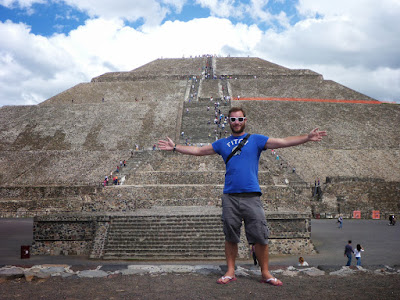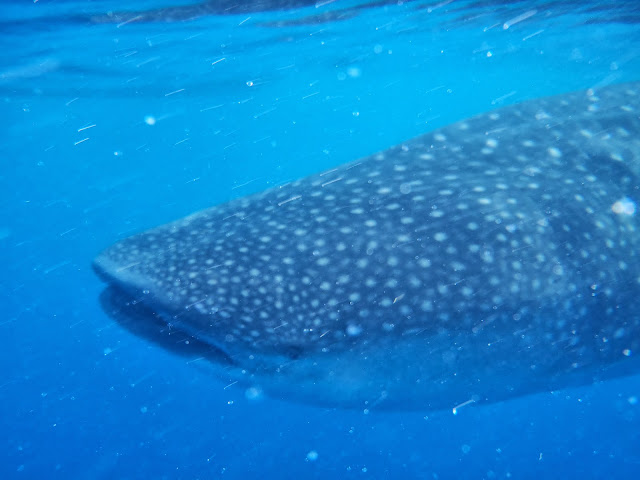There is so much to do in Mexico City I could probably do a dozen posts and still not do it justice, there are probably even some museums I would happily wander around in, especially the Museum of Anthropology and all the various ones that house ancient Mayan artifacts. However, I would like to think this won't be my last time here so I can save that for another time. With time pressing and only a weekend available, I will just focus on the most important things on my brief stay: Mexican wrestling, the Mayan city of Teotihuacan and a local football game.
Arriving at the hostel on Friday afternoon I soon made friends with people on the rooftop terrace as we all patiently waited for 5pm to arrive for the bar to open. Over a few beers everyone was talking about the Lucha Libre event that night, namely, Mexican wrestling. Having been made aware of this I quickly ran downstairs and found out that there was still time to buy a ticket for the show, much to my relief. I was aware of the wrestling but with it only being on Tuesdays and Fridays I felt lucky I got to fit it, unexpectedly, in my plans. Forget the fact it is a tour based thing, which I generally dislike, there was the promise of fighting dwarves and with that in mind I was sold. Pretty sure that's still okay.
Once the group got there we discovered that you can't take cameras in, however much to our bemusement, you can take in phones with cameras. Mexican logic at it's finest.
There were six matches in total, the first of which was a female fight which was in full swing as we found our seats. Not a bad show but the real entertainment started in the fourth show when there was about ten wrestlers involved. There didn't seem to be any discernible order to proceedings but no one in the arena cared as they screamed and shouted during what can only be described as a royal rumble on crack, with the place reaching fever pitch as a dwarf jumped off the ropes and nutting a guy in the cojones, brilliant. This match was worth the price of admission alone, what with the resident gay wrestler upsetting the opposition with kisses and affection, obligatory muscle men for the girls (and boys) and irascible dwarves been thrown around like rag dolls and just getting up again and kicking someone in the nuts. Pretty sure the beers helped too.
Come the end of the night, everyone was buying masks, I managed to find myself out of this purchasing bracket, and after a few drinks in a local bar with some 18 year old police recruits who had just graduated, God help us, we called it a night.
A little sluggish the next day but we managed to make it to Teotihuacan, a Mayan city of epic proportions just outside of Mexico City. Tours abound for this place but doing it on your own is a breeze, just get to the North Bus Terminal (taxi, bus) and from there ask for a ticket to Teotihuacan.
Entrance is the usual two ticket job and from there you have the sprawling grounds to traverse. The main roads are like a cross, two roads perpendicular to one another, with the extensive Avenue of the Dead running north to south culminating with the impressive Pyramid of the Moon. The, even bigger, Pyramid of the Sun lies along this road and surrounding the Pyramid of the Moon there are numerous other pyramids.
You could get a guide but for me the best thing about this place was just the sheer size of it, it reminded me of places like
The Forbidden City or the Summer Palace in Beijing, just massive. There are plenty of signs around the main monuments and a small museum if you are interested in learning a little more about the history of the place.
 |
| Avenue of the Dead |
 |
| Pyramid of the Sun |
 |
| Pyramid of the Sun |
 |
| Pyramid of the Moon |
After more drinking, partying in a gay bar and paying off police officials we found ourselves in the early hours of Sunday and on my final day of my trip, I was finally going to get to a football game. Sadly I managed to miss Boca in B.A and a cheap game in Bolivia but at the University Stadium I was able to enjoy a great afternoon out in the sun, drinking a beer and watching sub-par football surrounded by passionate, English speaking locals. A great way to round off the weekend before 48 hours of painful transport home, that'll teach me for flying coach.
 |
| No belts allowed in thr stadium |




